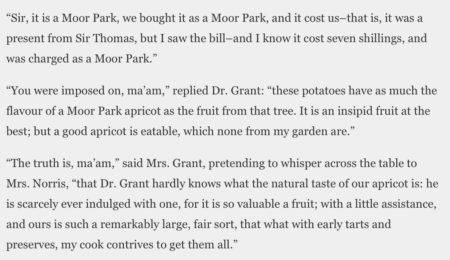- Not-so-suffering sassafrass.
- Another seed library, this one in Canada.
- Fruit breeder Dr David Cain gets 2020 Wilder Medal from American Pomological Society.
- PowerPoint on plant breeding. Dr Cain unavailable for comment.
- Which species can you bank anyway? With video goodness. Which I agree is not all that unusual these days, but still.
Nibbles: Canary collections, Integrating fish, Indigenous seeds, Dan Charles articles, Stats, FAO booklet
- Collections of banana and mangoes in the Canary Islands.
- No word about catfish with those bananas.
- Interview with the wonderful Rowen White, Seedkeeper from the Mohawk community of Akwesasne.
- NPR series on agricultural land, courtesy of the no less, though differently, wonderful Dan Charles.
- Harvard lectures on statistical analysis of social sciences data.
- FAO tells us “How the world’s food security depends on biodiversity“.
Brainfood: Niche modelling, Post-2020 double, CC & productivity, Wild cacao, Popcorn data, Regulations, Duplicates, Oz ag, Kenya diversity, Stressed wheat, DUS, Connectivity, Population differentiation
- ntbox: an R package with graphical user interface for modeling and evaluating multidimensional ecological niches. Yes, another one, deal with it.
- Global targets that reveal the social–ecological interdependencies of sustainable development. The post-2020 framework should not have separate targets for social and ecological outcomes.
- Integrating agroecological production in a robust post-2020 Global Biodiversity Framework. Case in point?
- The Historical Impact of Anthropogenic Climate Change on Global Agricultural Productivity. We’ve lost a decade of productivity growth since 1961.
- Exploring the diversity and distribution of crop wild relatives of cacao (Theobroma cacao L.) in Colombia. Habitat protection needed.
- The Global Popcorn Project. Here comes the data! And more.
- Editorial: Leeway to Operate With Plant Genetic Resources. Research Topic on ABS, biosafety and IPR regulations and how they affect use of PGR.
- SNP Markers and Evaluation of Duplicate Holdings of Brassica oleracea in Two European Genebanks. Out of 10 pairs of accessions with similar names in the Russian and Nordic genebanks, 5 showed genetic differences, and 3 of these also morphological differences.
- History of crop introductions, breeding and selection in Australia: The 140 years from 1788. But at what cost?
- The welfare effects of crop biodiversity as an adaptation to climate shocks in Kenya. Crop diversity mitigates income variability risk caused by climate.
- Genetics of yield, abiotic stress tolerance and biofortification in wheat (Triticum aestivum L.). Well that seems sorted then.
- Is plant variety registration keeping pace with speed breeding techniques? No?
- Global Cropland Connectivity: A Risk Factor for Invasion and Saturation by Emerging Pathogens and Pests. Nice maps of ease of movement among different cultivation areas of vegetatively propagated crops. Could be used to model movement of genetic resources as well as of pests/diseases?
- Global patterns of population genetic differentiation in seed plants. More population differentiation for tropical, mixed‐mating, non‐woody species pollinated by small insects, and lower for temperate, outcrossing trees pollinated by wind. Could perhaps be mashed up with this fragmentation database.
Nibbles: Yunnan mushrooms, Torres Is bananas, Boxgrove, Gluten trends, Apple rootstocks, USDA horticulture job
- There’s a sort of mycological culinary hotspot in Yunnan… Yeah, I thought that too.
- Signs found of old banana cultivation in Australia. Well, kinda. As in not as old as in PNG, and not mainland Australia.
- Really, really old horse butchery site in southern England excavated. When the Brits ate horses. Well, kinda.
- New wheat is pretty much like old wheat, gluten-wise at least.
- Breeding better apple rootstocks at USDA. A hitherto somewhat neglected aspect of apple genetic conservation and improvement.
- Speaking of USDA, here’s another job.
Famous British apricots abroad
So Plant Heritage tweeted a few days ago about the genera that are missing from the UK’s National Plant Collections.
The Missing Genera Campaign asks people with a passion for plants to put together a National Plant Collection of their own and join the Plant Heritage community in growing, sharing and saving plants.
One of the missing plants is the apricot, so I quickly checked on Genesys to see whether anyone else around the world has British apricots stashed away. Turns out there are two apricot varieties of British origin that are conserved in genebanks that publish their data on Genesys, a fact that I posted on Twitter too. Because, why not?

And that second one turns out to be rather special. As Plant Heritage quickly informed me, the Moor Park apricot is mentioned by Jane Austen in Mansfield Park, which was published about the time of the Battle of Waterloo.

Interestingly, the Moor Park apricot in Genesys is being conserved in Italy. But there must be other specimens in the UK, surely?